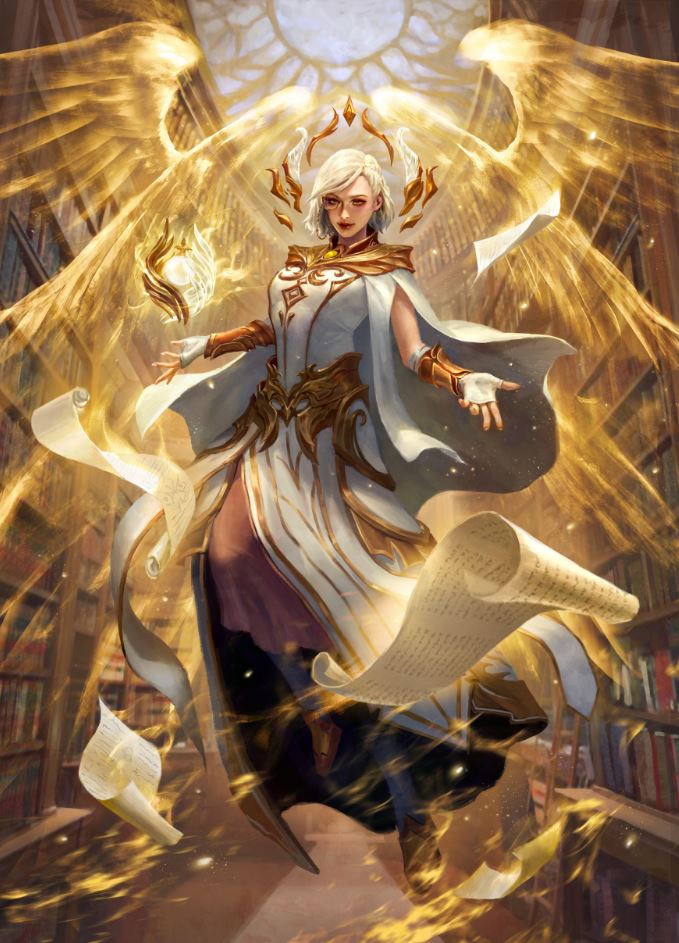Flesh and Blood’s Living Legend format kicked off in November and has been growing since, showing up as side events at marquee tournaments and as a featured format at the game’s Celebrational. With a Living Legend Calling slated for December in Chicago, Legend Story Studios (LSS) is amplifying the format in preparation, starting with Skirmish Season 9 at the end of August. Local game stores can choose between Living Legend and Blitz, with this being the first season ever to offer the choice of Living Legend to put the format on display on a global scale.
Living Legend is a Constructed format that acts as an eternal home for every hero in Flesh and Blood. After a hero accrues 1,000 Living Legend points in Classic Constructed — the main supported competitive format in the game — they leave it along with their signature weapon. Notably, no cards other than the actual hero and their signature weapon exit Classic Constructed. So, for example, when Chane, Bound by Shadow reached Living Legend, Chane and his weapon Galaxxi Black were retired from Classic Constructed, but all other Runeblade and Shadow cards remained legal for other Runeblade or Shadow heroes to wield.
The most powerful heroes in the history of Flesh and Blood continue to duke it out in Living Legend. Heroes like Bravo, Star of the Show, Prism, Sculptor of Arc Light, Lexi, Livewire, and the already mentioned Chane are just some of the heroes from the world of Rathe who continue to build on their legend. But any hero can compete in Living Legend, so new heroes like Zen, Tamer of Purpose from May’s Part the Mistveil can match up against the game’s most dominant heroes. Players get to stick with or revisit their favorite hero in Living Legend, giving their loved hero and deck a forever home.
And while the power level of Living Legend is higher than Classic Constructed, LSS has taken action on the format multiple times to prevent it from becoming the wild west. Bravo, Star of the Show dominated the first ever Living Legend event, a Battle Hardened held the weekend of the World Championship in Barcelona where every card was legal, going a perfect eight-for-eight in the Top 8. LSS responded by restricting seven cards, six of which were Guardian or Elemental cards that Bravo utilized.
Shortly after the restrictions aimed at bringing Bravo back in line went into effect, Brodie Spurlock used Lexi, Livewire — just two months after the Ranger achieved Living Legend status — to win the Celebrational in January. Then in March, Michael Feng won the Living Legend Battle Hardened at Pro Tour: Los Angeles with Chane. In early July, LSS took Channel Lake Frigid off the restricted list, giving Bravo full access to one of the more powerful disruptive tools in the game. Most recently, Alexander Vore won the Battle Hardened at Pro Tour: Amsterdam with Kano, Dracai of Aether. The Amsterdam Battle Hardened Top 8 featured eight different heroes.
With the format wide open, it now moves into Skirmish Season 9 on August 24 to allow more players than ever before to play it. LSS and James White, the creator of Flesh and Blood, look forward to seeing what the community can do with the format. To get a feel for Living Legend, as well as all things Flesh and Blood, Star City Games interviewed White to get his thoughts on the format, its future, and as much info on the upcoming release of Rosetta as he’d give up.
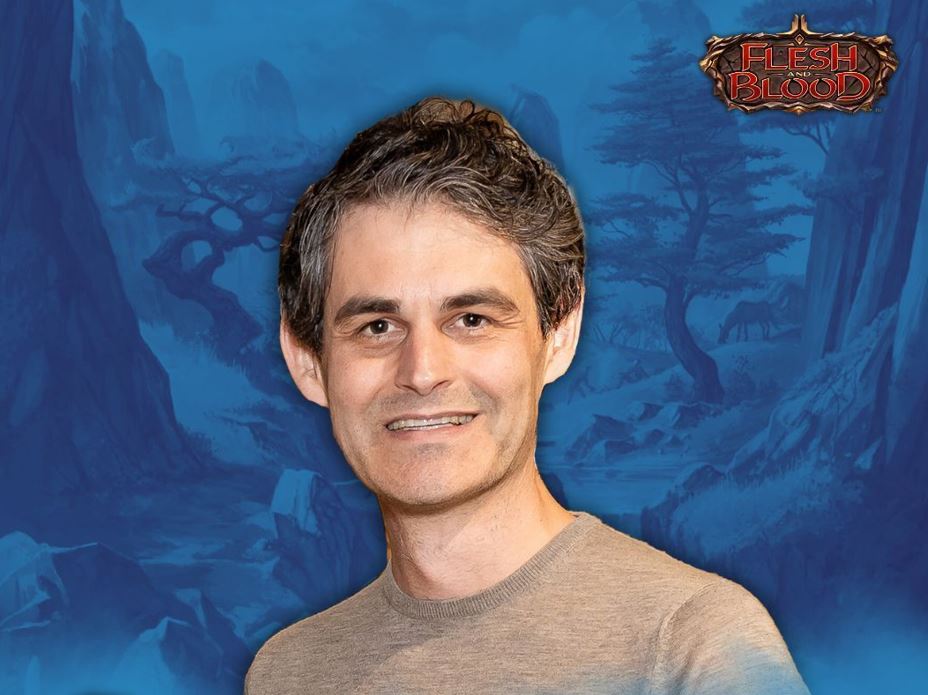
SCG: What are the goals of the Living Legend format?
White: The first thing is making it more accessible. That entails getting it into the Skirmish season program so there is a framework in place that spans the entire globe so players can engage in the format. People want to play it, so hopefully they show up to their LGS to play it.
I want to be clear, Classic Constructed is the primary high-level tournament format, but we will look to sprinkle in some Living Legend here and there throughout the calendar. Fundamentally, it is important that people have a home for any Flesh and Blood card that we ever print. We want folks to know they will have opportunities to play with their favorite hero from time to time in Living Legend. If cards do get banned in Classic Constructed they can still have a home in Living Legend so players can play all of their cards.
Something else I really want to speak to is how Living Legend functions as a card legality model in Flesh and Blood and how it is something unique in the TCG industry. There are a lot of ways that different games manage their card legality. Rotation is a model that has become normalized and accepted, but in my view that is a sugarcoated way of banning around a thousand cards a year. I really wanted to take a different approach with Flesh and Blood and our card legality to give fans longer utility over their card collection. It’s nice to buy cards, collect them, play with them for many, many years and form a love of certain cards and enjoy playing with them over long periods of time. I enjoyed that journey myself when I was younger, so I wanted to create a model where people could enjoy their collection over a long span of time and have that long-term utility, but at the same time for the card pool to be dynamic and for card legality to flux in and out.
The way that works in Flesh and Blood is the roster of heroes that is legal at any one time dictates the legality of the card pool and that’s why having classes and talents is so important in our game system because that is how certain batches of cards move in and out of legality. Right now Draconic Illusionist cards aren’t legal in Classic Constructed because there isn’t a Draconic Illusionist that is legal, but in some point in the not-so-distant future we will make another one and all of those cards will come back to Classic Constructed and the people who held onto those cards will get paid off and the people who really miss Dromai and miss summoning dragons will be able to rejoice again. And I think that is a really cool way to respect card ownership and dedication to collecting a trading card game and holding on to those cards you love and having a hope and desire to play with your favorite cards once again in the future when a hero of that class and talent mix is reintroduced into the game. A lot of thought went into this model all the way back to our early prelaunch design and development days. It really is baked into the DNA of what Flesh and Blood is from a design point of view. And it’s an area of the Flesh and Blood experience that isn’t talked about much or even potentially understood.
When people say, for example, in regards to a hero like Kayo doing well in the Heavy Hitters season, “Oh the deck is only going to get banned soon anyway,” — no. Kayo might hit living legend, then all of those Brute cards that you’ve invested into are transferable to Rhinar or Levia or any other Brute we ever make. So, yes, that one Kayo hero card that can be bought for seven cents will no longer be legal in Classic Constructed, but all of the other iconic Brute cards can be used in any other Brute or future Brute that we release. We built this system in the best interest of the players and consumers, not LSS. It’d be way better for us to rotate and ban a thousand cards a year, but we did it for our consideration and love of gamers, because we are gamers. We’ve lived this journey and we want what is best for the fans.
SCG: With the upcoming Skirmish season showcasing Living Legend, what kind of other events can we expect going forward to use the format other than the Calling in Chicago?
White: There is another Skirmish season at the end of the year that is split Blitz and Living Legend and our marquee events — the Pro Tours and World Championship — will have significant Living Legend side events… probably a Battle Hardened but it is possible it could maybe go up to a Calling. It is intended for Living Legend to be a consistent part of the program schedule for our marquee events.
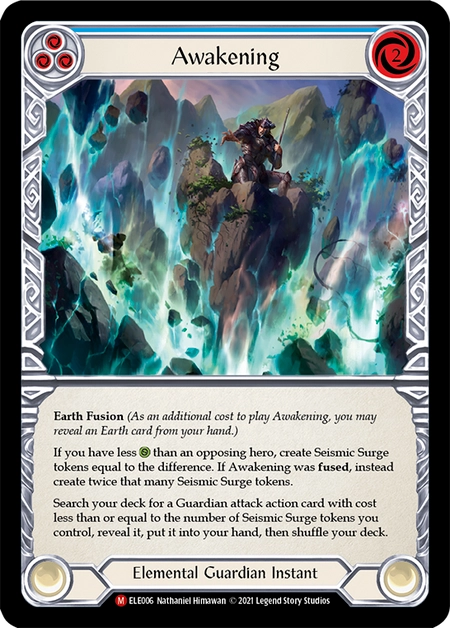
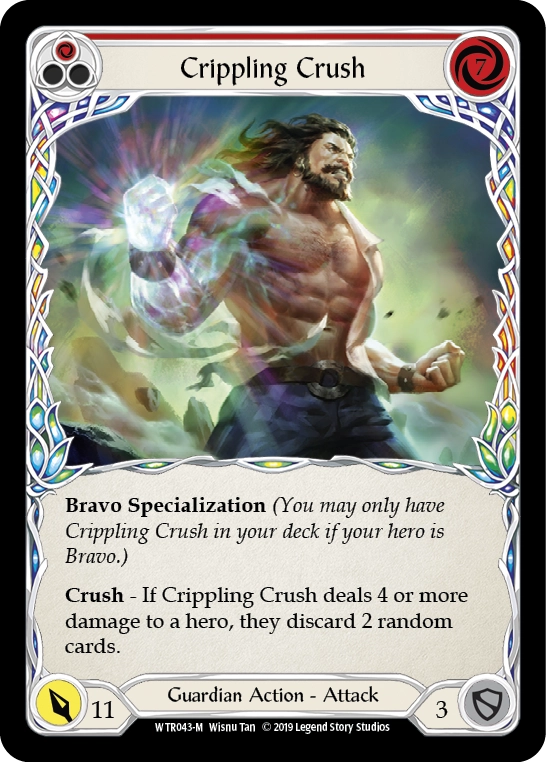
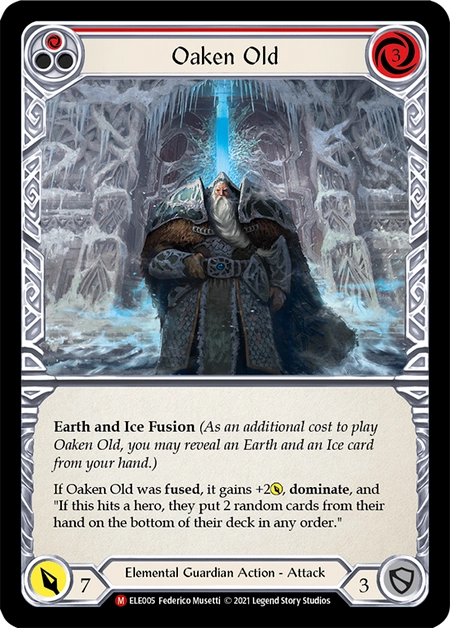
SCG: We’ve already seen some restrictions to bring Bravo, Star of the Show’s power down. What is the ideal power level of the format in comparison to Classic Constructed? Do you see a point where Starvo goes back to his fully powered state?
White: We implemented some far-reaching restrictions on Starvo after the inaugural event in Barcelona that brought him down, to the point it was probably too much which is why we gave back Channel Lake Frigid. He is competitive now but not as dominant as he was. There is an argument we can start bringing back other cards we have restricted, but it will probably be one card at a time, so there is a good chance you will see some of his other cards come back.
Intrinsically, Living Legend will be more powerful than Classic Constructed and that is okay, what is important is that games can get played at whatever power level and players have agency to engage with the game state. Having the presence of Ice heroes in the format helps a lot for the power level to be higher than Classic Constructed because there are more checks and balances to interact with the most degenerate things you can do in the game – things like Blizzard, Channel Lake Frigid, and Hypothermia. A big part of player agency is people have the options to go and use cards that can favorably interact with other things that are being done to them. Every card is available so there are more options to interact with the other powerful things. We don’t mind a format being super high, but we do want meaningful gameplay to be going on.
SCG: How much attention is the Living Legend format going to receive through a balance perspective? Will you let the format adjust to itself or solve its problems by taking action on it?
White: Being honest, as a studio we only have a limited amount of internal bandwidth to design and develop formats. Our primary focus is on Classic Constructed then we try to carve out some time to look at Blitz from time to time. I think we would probably be spending that same amount of time on Living Legend going forward. We spend a hell of a lot of time developing Booster Draft and Sealed Deck. What we really need for Living Legend is data back from the community, so things like Skirmish season are really important for us to get meaningful amounts of data to make some informed decisions if other cards should be restricted or if others should come back from being restricted.
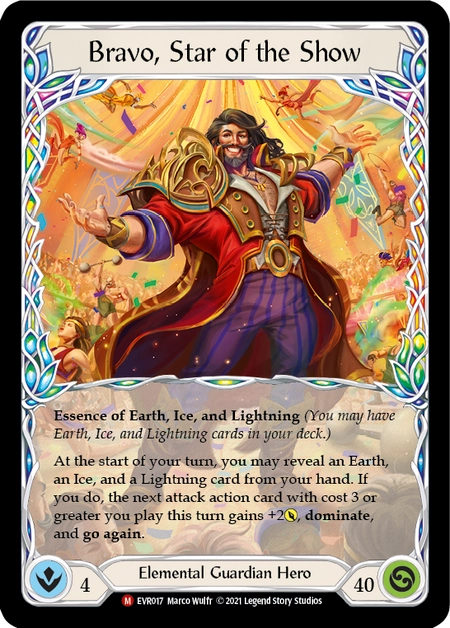
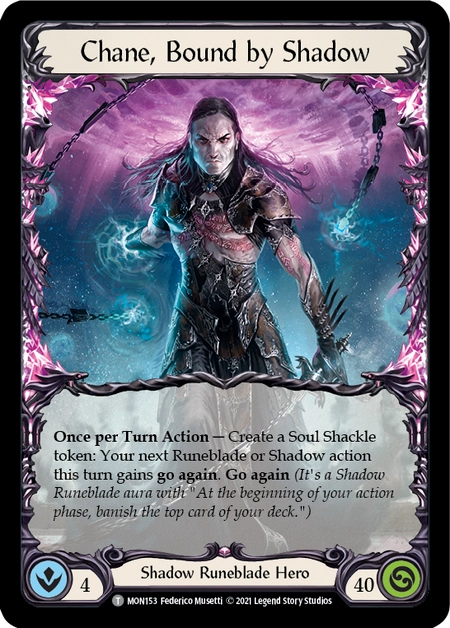
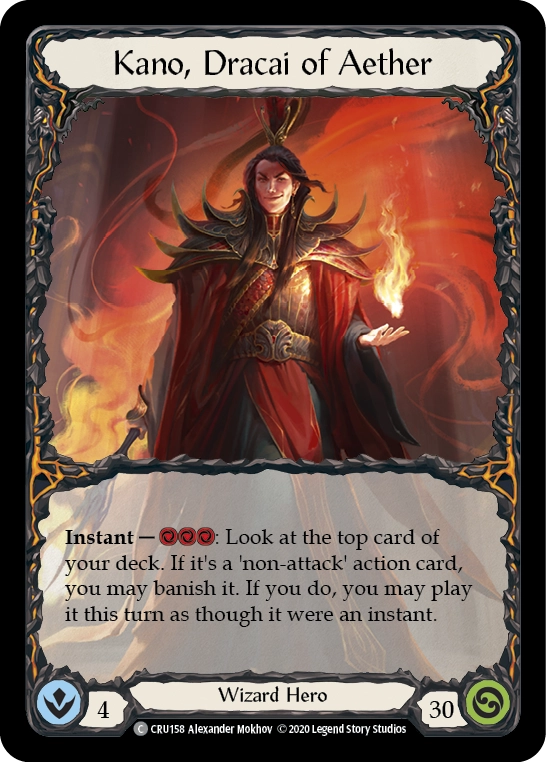
SCG: With four different heroes winning the four major Living Legend events, and this past weekend’s Battle Hardened featuring eight different heroes, are you pretty happy with the state of the format?
White: Yeah, I think the Battle Hardened in Amsterdam is a great showcase for the format. Eight different heroes in the Top 8 from a 150-odd player tournament is a pretty good sign that the format is in a good place. There were also some more interesting decks just out of the Top 8 as well. There are plenty of good options for people to play innovative and cool decks.
SCG: Are there any long-term concerns for the Living Legend format?
White: I wouldn’t say there is anything on our immediate radar that is concerning to be honest. We need to get the format played more at a global level to see what our community comes up with and go from there.
SCG: Do Flesh and Blood players need to worry about additional product releases that will inject major amounts of cards directly to Living Legend?
White: Great question, we don’t have any intention to release a product where all of the cards are only legal in a certain format, but there will be cases where we print cards specifically for a hero who have already hit Living Legend. So, for example, there might be a Chane specialization come out even though he is already a Living Legend in both Classic Constructed and Blitz. There is a card in Rosetta that would currently only be playable in Briar. It’s an example of a card we made very much in mind to open up a new deck archetype for Briar in Living Legend, but keep in mind this particular card will be legal in Classic Constructed if we make another Earth Lightning Runeblade in the future.
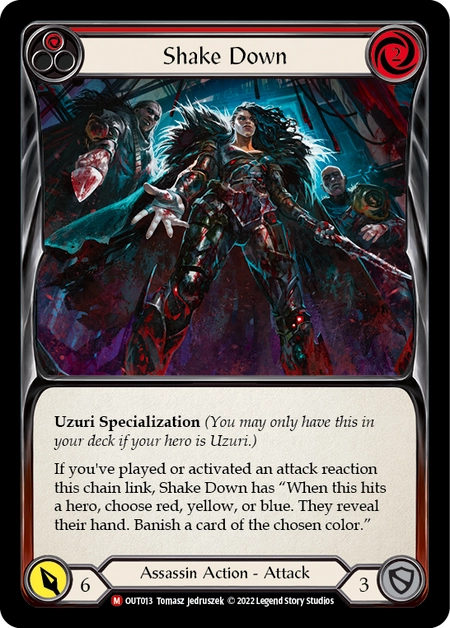
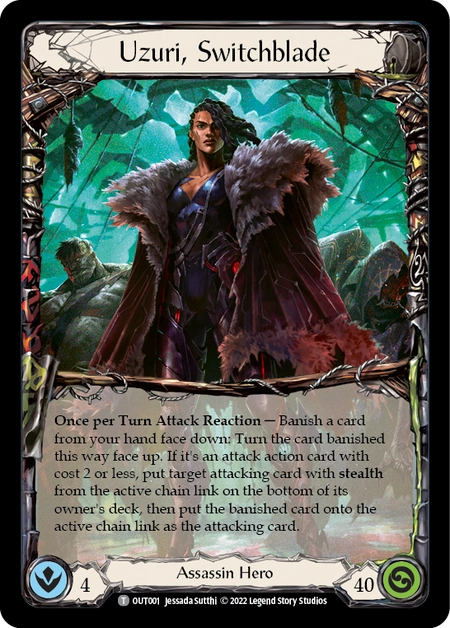

SCG: How many guesses would you have needed before picking Uzuri to win the Pro Tour? Was it on your radar?
White: It was incredible to see somebody look at the meta from outside the box through a different lens than everyone else, and it made so much sense for why Uzuri was a great choice. Uzuri has all the disruption Assassin offers to favorably engage with Zen and can do it with a very small amount of blues so you don’t expose yourself to Nuu’s ability, so you get the best of both worlds. Saying that, I did an interview a couple months ago where I was asked who was the most underrated hero and I said Uzuri. While she wasn’t on my Bingo card for winning a Pro Tour, she was certainly on the top of my list for most underappreciated hero in recent times.
SCG: You stated from early on you wanted Flesh and Blood to be a global game. With the expansion the game has seen, PT Top 8s ranging from four to eight different countries represented and winners coming from five different countries, are you satisfied?
White: It’s one of the things I am most proud of that we have achieved so far. It has truly become a global game, it’s printed in six languages, officially sold in 50 countries, and we ran 45 National Championships this year. We’ve had Pro Tour champions from all three of our major regions, US, Europe, and APAC now — the amount of global representation at these big marquee events is just incredible. One of the things that makes me feel incredibly proud is when we host our World Championships and the National Champions carry the flag down the isle in the flag procession and we call out the ambassadors of their country as they make their way up to the stage with their flag.
We have achieved on that vision, but we still have a few more countries to welcome on officially, Latin America is the next territory that we are going to start working on, starting at the backend of this year. We will be taking it country by country across Latin America, so it won’t be the whole area at one time, we will be very measured with our sequencing so we make sure we do a great job for each country as we work our way across Latin America.
SCG: With the return of eight-pack Sealed for Rosetta and the positive reception it had from Part the Mistveil, has there been any consideration for any changes to Draft?
White: We are very happy with draft. Part the Mistveil has been seen as our best Limited format yet, I think Rosetta is an exceptional Limited format as well and it functions very well with three booster packs, so absolutely no intention to change that. Eight-pack Sealed was well received, it was an experiment and people love it so we are going to continue with it for the foreseeable future. I can assure you that Booster Draft will not be changing from three packs.
SCG: What are the challenges when designing a set like Rosetta that revolves around such a narrow theme? How do you keep the Limited experience fresh?
White: Often times restrictions breed creativity, so it wasn’t too hard in that respect. The structure of the set is the first of its kind for Flesh and Blood: two classes and essentially the two talents. You can be more open in your first picks while drafting, if you pick Earth cards you can go down two paths, likewise if you start taking Wizard cards, and it is the same for all four quadrants. It allows you to read the table and read the signals of what is being passed to you. From a structural point of view, the team found the drafting process very enjoyable.
From a gameplay point of view, it is a unique format with a lot of arcane damage, but no arcane barrier. There are other ways to interact with arcane damage, one of those ways is life gain. While life gain doesn’t directly interact with arcane damage, it can offset the arcane damage. It’s interesting as we typically don’t put a lot of life gain in our sets because it has a tendency to drive games to fatigue states, but this product has a ton of life gain and it just works because of the unpreventable damage from arcane damage.
We play a ton of Limited internally and we are getting way better at developing our Limited formats and the world seems to agree with that statement in terms of Part the Mistveil. Rosetta is another solid, high-level draft experience.
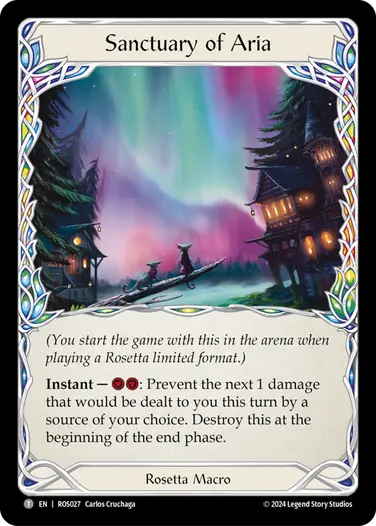
SCG: Where did the Macro come from?
White: The Macro was something we were working on for a future set and you will see it again in 2025. They won’t be in every set, but we will use them from time to time. We were getting to the tail end of Rosetta and it had Helio’s Mitre like we did in Uprising but one of the frustration points that kept coming back from the developers was that it felt bad to pick a head equipment because you could always get the free Helio’s Mitre from the token station, so it felt like a wasted pick even though the head pieces that were in the product were quite good. Lead game developer Chris Gehring suggested why don’t we turn Helio’s Mitre into a Macro which became Sanctuary of Aria. It does the same thing as Helio’s Mitre but it doesn’t take up an equipment slot. From a theming point of view, the Sanctuary of Aria is a defined thing in the world of Rathe, it is this protective sphere that sits across Aria, so flavorfully it makes sense in what it is trying to express of this element that exists in Aria.
SCG: Part the Mistveil came out of the oven pretty hot, do you expect the power level of Rosetta to be higher or lower?
White: Part the Mistveil is about what peak power looks like. Rosetta will be meaningful to the meta and tournament play. There are definitely some fun and powerful things you can do with the Rosetta heroes. Maybe it’s just like one notch down from Part the Mistveil.
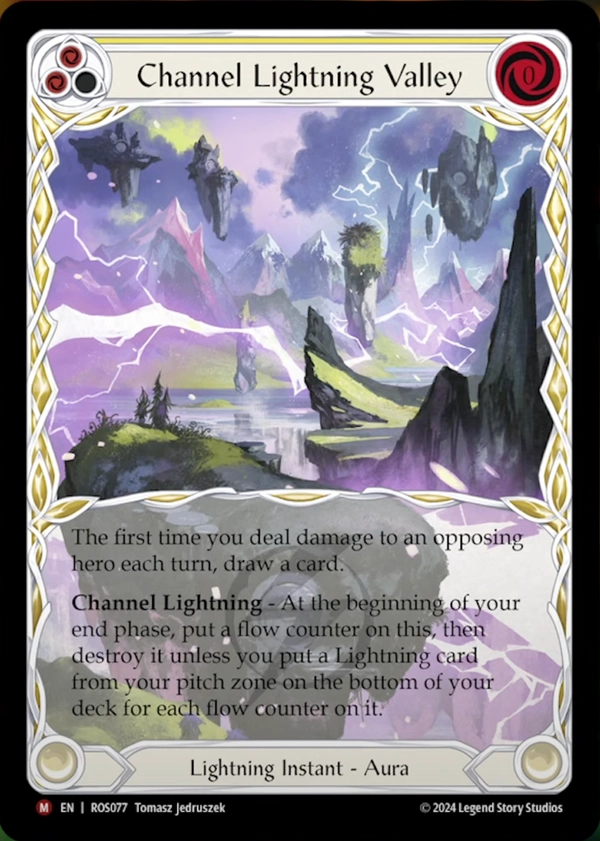
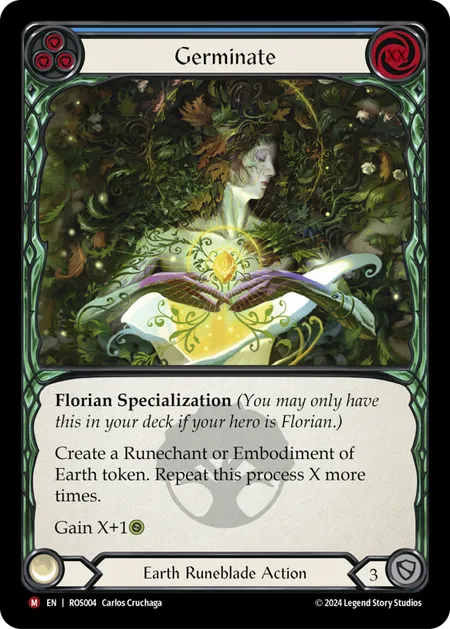
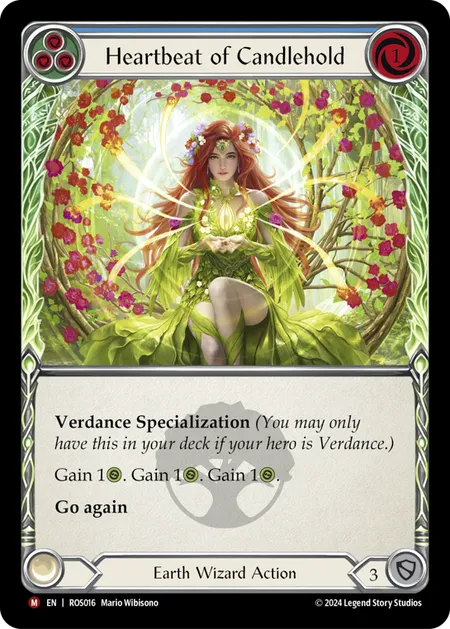
SCG: Can we get a more detailed plan on previews and what will be hidden for players to find at the World Premiere? Will box breaks be delayed until after the event?
White: Something like 80 percent of the Majestics will not be revealed during preview season, I believe zero of the legendary cards are being revealed in preview season, and none of the marvels are getting shown off prior. We are really leaving as much as possible to be discovered by fans in Tampa Bay at SCG CON. There is a preview season still and we are working with many of our key content creators. There is still some exciting stuff that will be out there like important commons and rares. We will have box breaks, but they will happen in Tampa Bay after the conclusion of the World Premiere. So that Friday night the box breakers will come in and do their thing, but not until all of the fans have their first shot at discovering it for themselves.
Learn more about the Living Legend system from the Flesh and Blood website. Plan to attend the Rosetta World Premiere at SCG CON Tampa Bay.

